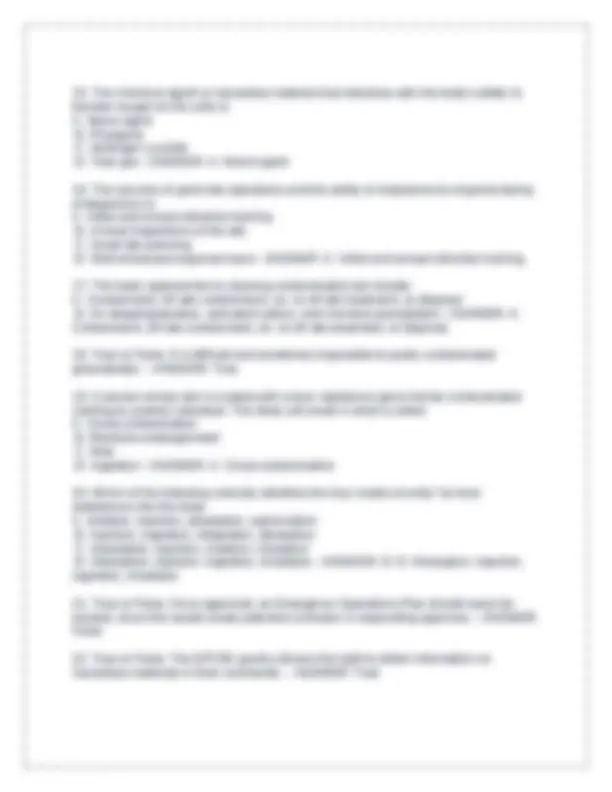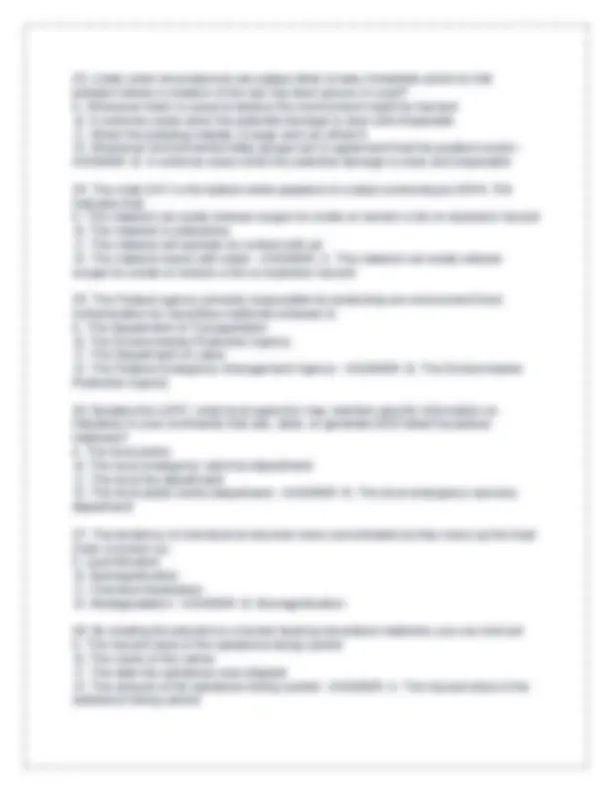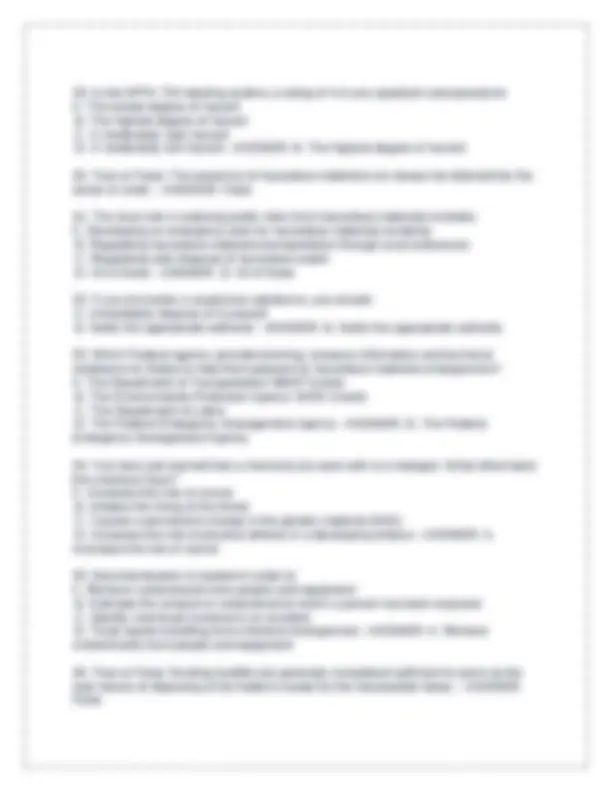





Study with the several resources on Docsity

Earn points by helping other students or get them with a premium plan


Prepare for your exams
Study with the several resources on Docsity

Earn points to download
Earn points by helping other students or get them with a premium plan
Community
Ask the community for help and clear up your study doubts
Discover the best universities in your country according to Docsity users
Free resources
Download our free guides on studying techniques, anxiety management strategies, and thesis advice from Docsity tutors
A series of multiple-choice questions and answers related to hazardous materials (hazmat) safety and response. It covers topics such as the purpose of hazmat response teams, federal regulations, the phases of a hazardous material's life cycle, emergency planning, and the identification and handling of various hazardous substances. A valuable resource for individuals seeking to understand the basics of hazmat safety and response.
Typology: Exams
1 / 7

This page cannot be seen from the preview
Don't miss anything!



